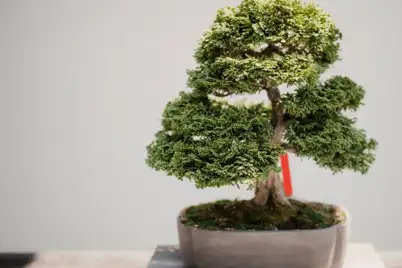Citrus trees are very popular to grow and can be found in most backyards around Australia.
Every week we receive lots of questions on the best ways to promote healthy citrus trees and a great harvest, as well as protecting trees from a broad range of pests, diseases and deficiencies. This article will help you solve some of the most common citrus problems.

Where to Start
Healthy soil
Citrus trees have a shallow root system, so it's important for the soil to be healthy. When planting a new citrus tree, enrich and improve the soil in the planting hole with Yates Dynamic Lifter Plant Food & Soil Improver Pellets. These pellets are a rich source of organic matter and help enrich and improve the soil.
Citrus trees also need the soil to be well-drained, as they do not tolerate a soggy root system. In areas with heavy or poorly drained soil, plant citrus trees in raised mounds of free-draining soil or consider growing trees in pots. For citrus trees growing in pots, choose a dwarf variety, a pot at least 40 cm in diameter (like a Yates Tuscan pot) and use a premium potting mix like Yates Premium Potting Mix with Dynamic Lifter.
Feeding
Does your citrus tree have yellow leaves? It needs nutrients! Citrus trees are hungry throughout the year and need regular feeding to promote healthy green leaf and stem growth as well as flowering and fruiting. Feed citrus trees every 8 weeks with Yates Dynamic Lifter Plant Food Pellets Fruit & Citrus. The pellets are boosted with nitrogen for stronger growth, contain extra phosphorus for longer roots and are boosted with potassium for bigger juicier fruit. Sprinkle the pellets around the root zone and water in well.
Pruning
Most citrus trees don't need regular pruning, particularly if they are dwarf varieties. However, if a tree is getting too big, once it has finished fruiting (usually in early spring), it can be pruned back to the desired size. A word of caution is that pruned citrus trees will not fruit for 2 years.
If the entire tree doesn't require pruning, simply cut back any dead/diseased wood, twiggy/straggly growth and any congested branches growing towards the centre of the tree. You can also remove any branches that are hanging low (almost touching the soil) to help lift the canopy. If you live in a frosty area, wait until the chance of last frost has passed before pruning.
If your trees are old and have stopped being productive, it's worth giving them a hard prune – it will help rejuvenate them and give them a new lease on life! It will take 2 years to produce fruit again, while the branches grow back, but it can be worth it. This method is called 'skeletonising' and involves cutting all the growth back, so that you're left with a single trunk and strong, evening spaced branch stumps.
Ensure you use a sharp sterile pair of secateurs and/or loppers when pruning, as you want clean cuts and avoid introducing diseases.
Soil pH
A suitable pH for growing citrus is between 6-7. When the pH is too low (acidic) you will notice that your citrus may suffer from a magnesium deficiency. Magnesium is very mobile in plants and a shortage of this element results in yellowing of the leaf, starting near the edges and tips of the leaf, leaving a distinct green V-shape in the centre.
This deficiency can be remedied by adding Yates Lime & Dolomite Soil Improver Granules to the soil, which will supply calcium and magnesium and also raise the pH (make the soil more alkaline). Water in well after applying. Also keep your citrus well fertilised throughout the year by using a specifically formulated citrus food such as Yates Dynamic Lifter Plant Food Pellets Fruit & Citrus.
Watering & Mulching
The shallow root system of citrus trees makes them vulnerable to drying out. To keep citrus trees healthy, water them deeply and thoroughly 2 - 3 times a week. And to help keep the soil moist, apply a layer of mulch, like Yates Dynamic Lifter 4 in 1 Mulch, around the root zone. Keep the mulch 5 - 10 cm away from the trunk, which increases air flow and helps reduce the chance of collar rot diseases.
Diagnose Citrus Problems
Citrus tree losing leaves?
A citrus tree that has lost many leaves and has dead stems needs care. Prune any dead wood off to encourage new growth, apply a seaweed solution to promote new root growth and ensure the soil or potting mix is kept moist (not wet). Once new stems and leaves (hopefully) emerge, the tree can be fertilised.
Holes in your citrus tree
Holes in your citrus tree can indicate that its been affected by a borer. Borers will attack weak plants and those under stress. If you find a hole get a skewer and pierce it down the hole to remove the borer. If you have numerous holes then it might be best to remove, share a photo with us on Live Chat and we can diagnose further.
Sooty Mould on citrus trees
Sooty mould is another problem to watch out for. It's a fungal disease that appears as a black ash-like film over leaves and stems and needs to be treated with an oil-based spray like Pest Oil. In almost all cases, the sooty mould is secondary to an infestation of insects that secrete honeydew. These insects include aphids, scale, mealybugs and white flies. Treating the insects will remove the source of the honeydew and dry up the sooty mould, which will eventually fall or wash off the foliage. The mould itself does not feed on the plant, however as it covers the leaf surfaces, it is blocking light and reducing photosynthesis, essential for plant growth.
Citrus Leaf Miner
Citrus Leaf Miner is an insect pest that causes leaves to curl and distort and leaves will develop silvery brown tunnels. The tiny Citrus Leaf Miner tiny moth lays eggs onto young leaves and the larvae hatch and cause the leaf damage. Citrus Leaf Miner damage needs to be prevented (it cannot be cured once the leaves are affected), by applying an oil-based spray like PestOil over the young leaves every 5 - 14 days. Once the leaves have matured, they're no longer vulnerable to the Citrus Leaf Miner.
Bronze Orange Bugs (also known as Stink Bugs) on your citrus
Bronze Orange Bugs are prolific pests that damage citrus trees, causing new stems and leaves to wilt and die and young fruit to drop. Bronze orange bugs are most common during the warmer months. This pest appears first in late winter as a light green nymph, making it hard to spot. As bronze orange bugs mature they change from green to bright orange and then dark brown. It's important to control Bronze Orange Bugs as soon as they're noticed. Spray them directly with OCP eco-pyrethrum PLUS. When treating trees for Bronze Orange Bugs, wear long sleeves and eye protection as these bugs can squirt a nasty caustic orange liquid at you.



